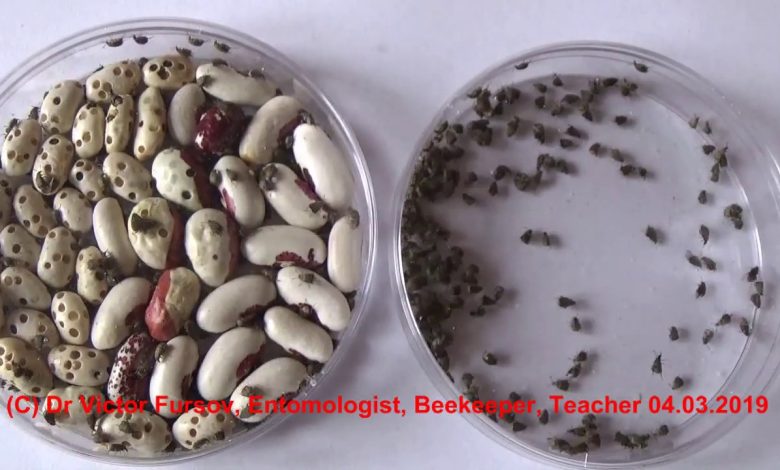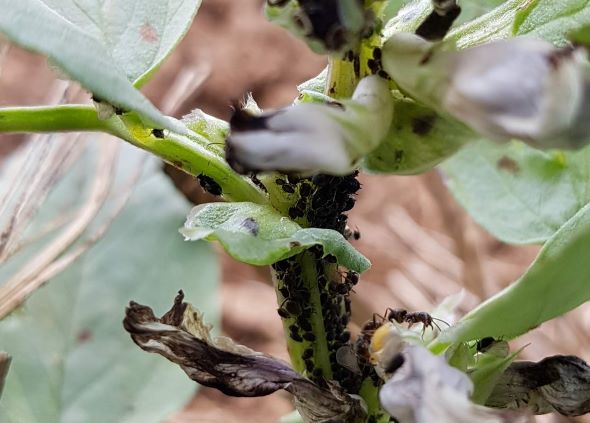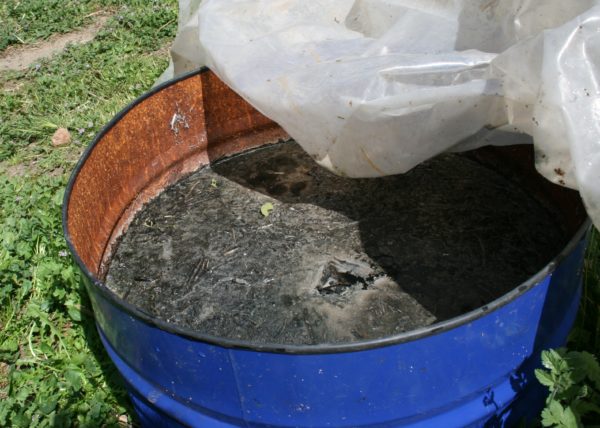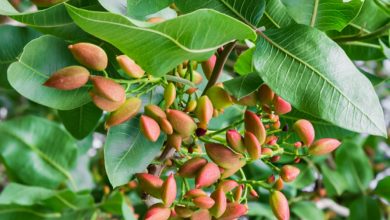Black Bugs in Beans: What They Are and How to Get Rid of Them

Hello Agrohuerters, in the previous post I told you about “ How to go from conventional to organic garden ” about a visit I made to the garden of our Agrohuerter (Mireia, Barcelona). Well, Mireia told me that something was happening to the beans, for approximately two weeks they were no longer as well as they used to be, but they seemed «sad». We saw that his beans had some black bugs … What could they be?

Black bugs on the bean plant
From a distance they already looked quite decayed, so I went closer to see what could be happening, and to my surprise I saw that they were totally covered by some black bugs of approximately 2-3 mm in size.
Of all the bean plants I had (about 12 in a row) there were 2 in particular that were heavily infested and therefore very diseased. On the leaves, seen from above, these small insects were not seen, rather they had more or less circular yellowish spots, in some you could even see tiny holes. Where they were located was in the stem area and under the leaves. So the plant seen from above did not seem to have any insects.
These bugs are a very common plague that mainly affects beans, peas and broad beans.

black aphids
These black bugs are known as black bean aphids (Aphis craccivora), to the naked eye they are shiny black, but seen very closely their antennae are yellowish white. They are usually in the areas of the plant where there are new shoots. So it prevents the plant from growing normally.
Aphids in general are a very invasive species, they feed on the suction they make on the leaves, which is why these areas of the plant dry up. Sometimes the leaves roll up on themselves. Aphids are virus transmitters so sometimes their attack is combined with that of this virus and is devastating for the plant.
Other times, especially in summer, the areas where the plant has been affected appear fungi, which also leads to a fatal end.
How to prevent the black aphid?
For the black bean aphid there are many forms of prevention, such as avoiding excess nitrogenous fertilizer or making associations with crops that make good use of it, such as corn, aubergine or cucumber.
Do not over-water and never flood the soil. To know if the aphids are in our garden and before they invade the plants, we can use yellow sticky traps, these are placed at a not very high height with respect to the crop.
If they are broad beans, it is convenient to sprout the plants from the seventh group of flowers.
Ecological treatment against black aphids
As I have previously said, this is a very invasive pest, that is, it installs very quickly and acts equally quickly. If it is not in a very advanced state, you can use sulfur repellents and quartz powder scattered on the ground.
Botanical repellent treatments, which can be an extract or infusion of garlic, rhubarb, nettles or wormwood. Before infusing, the liquid can be left to macerate for a few days.

potassium soap
Carry out treatment with potassium soap in the morning or in the afternoon, but as long as the weather is dry, being generous with the contribution, if the plague is very severe it can be used up to 2 times a week.
neem oil
Use Neem oil at dusk, if the plague is very persistent, you can alternate with potassium soap.
Natural enemies of the black aphid
Another very good option is to use natural enemies of the black aphid: predators that feed on them such as lacewings, ladybugs, Orius… etc.
Fungi that cause a disease to insects known as » soft muscardine disease » these fungi are: Verticillium lecanii or Beauveria bassiana, of the latter they sell commercial preparations for spraying. The alternative of natural predators is very effective, but it has the problem that it affects the auxiliary fauna of the place, so it is recommended to use it only in extreme cases.
Preventive methods against the black aphid
If the plague is very strong or it is not stopped in time, the plant can dry up and die, which is what ultimately happened to the plants in this orchard. They all had to be uprooted and replanted, not a single one was left alive. Therefore, with the new ones, a preventive treatment will be carried out. Let’s hope they grow healthy and give many beans!
References
- Woltz JM, Isaacs R, Landis DA (2012). Landscape structure and habitat management differentially influence insect natural enemies in an agricultural landscape. Agriculture, Ecosystems and Environment, 152, 40–49.
- Simon, J., Peccoud, J. (2018). Science Direct Rapid evolution of aphid pests in agricultural environments. Current Opinion in Insect Science, 26, 17–24.
- Letourneau, DK, Jedlicka, JA, Bothwell, SG, Moreno, CR (2009). Effects of Natural Enemy Biodiversity on the Suppression of Arthropod Herbivores in Terrestrial Ecosystems. Annual Review of Ecology, Evolution, and Systematics, 40, 573–592.
Greetings and until next time Agrohuerters!

![Photo of Care of Geraniums: [Earth, Strengthening, Humidity and Pruning]](https://www.complete-gardening.com/wp-content/uploads/2022/08/care-of-geraniums-earth-strengthening-humidity-and-pruning-390x220.jpg)
![Photo of How, When and Where to Plant Hydrangeas: [Guide for your Garden]](https://www.complete-gardening.com/wp-content/uploads/2022/08/how-when-and-where-to-plant-hydrangeas-guide-for-your-garden-390x220.jpg)
![Photo of Prune Orange and Lemon Trees: [Importance, Time, Tools, Considerations and Steps]](https://www.complete-gardening.com/wp-content/uploads/2022/08/prune-orange-and-lemon-trees-importance-time-tools-considerations-and-steps-390x220.jpg)
